My father was a carpenter who loved wood. He also loved trees, and carried a deep respect for the material he used to build houses and cabinets. I don’t remember ever seeing him throw away a piece of wood. There were boxes of assorted scraps all around the edge of his shop and he delighted in finding uses for those pieces in the projects he was always working on. A mindset like this has been the driving force behind the work of Richard Haining, an artist and woodworker whose “STACKED” collection turns old, discarded pieces of wood into new and treasured pieces of art.
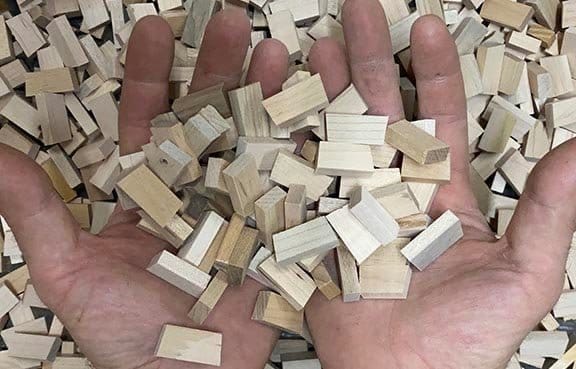
Haining initially studied and worked in clay at the Rhode Island School of Design, but after an instructor pointed out that his methods (particularly his sanding before firing) were more suitable to the medium of wood than clay, he changed over to woodworking studies. This is when he became entranced with wood.
Later, working as an assistant furniture maker for a set design company in New York City, he collected plywood pieces that had been discarded from deconstructed sets. With fieldstone walls as his inspiration, he began cutting the bits and pieces of plywood into small, uniform rectangular blocks and experimented with stacking them on top of each other to create various contoured shapes. Because the blocks were so small, just about any piece of wood could be cut up to create the wooden blocks.
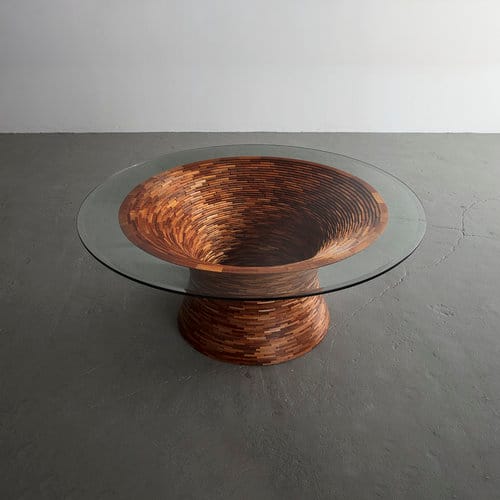
Although the original impetus to reuse salvaged wood was economic for Haining, his motivation has become much larger than that alone. He has developed a deep appreciation for the old wood he uses. For Haining, the lumber carries history in its marks and scars. “Water and mineral stains, contrasting heartwood and sapwood, knots, century-old nail holes, and other 'defects' that are part of that lumber’s history are a fingerprint of time since passed, a natural beauty to be celebrated, and only found through reclamation.”
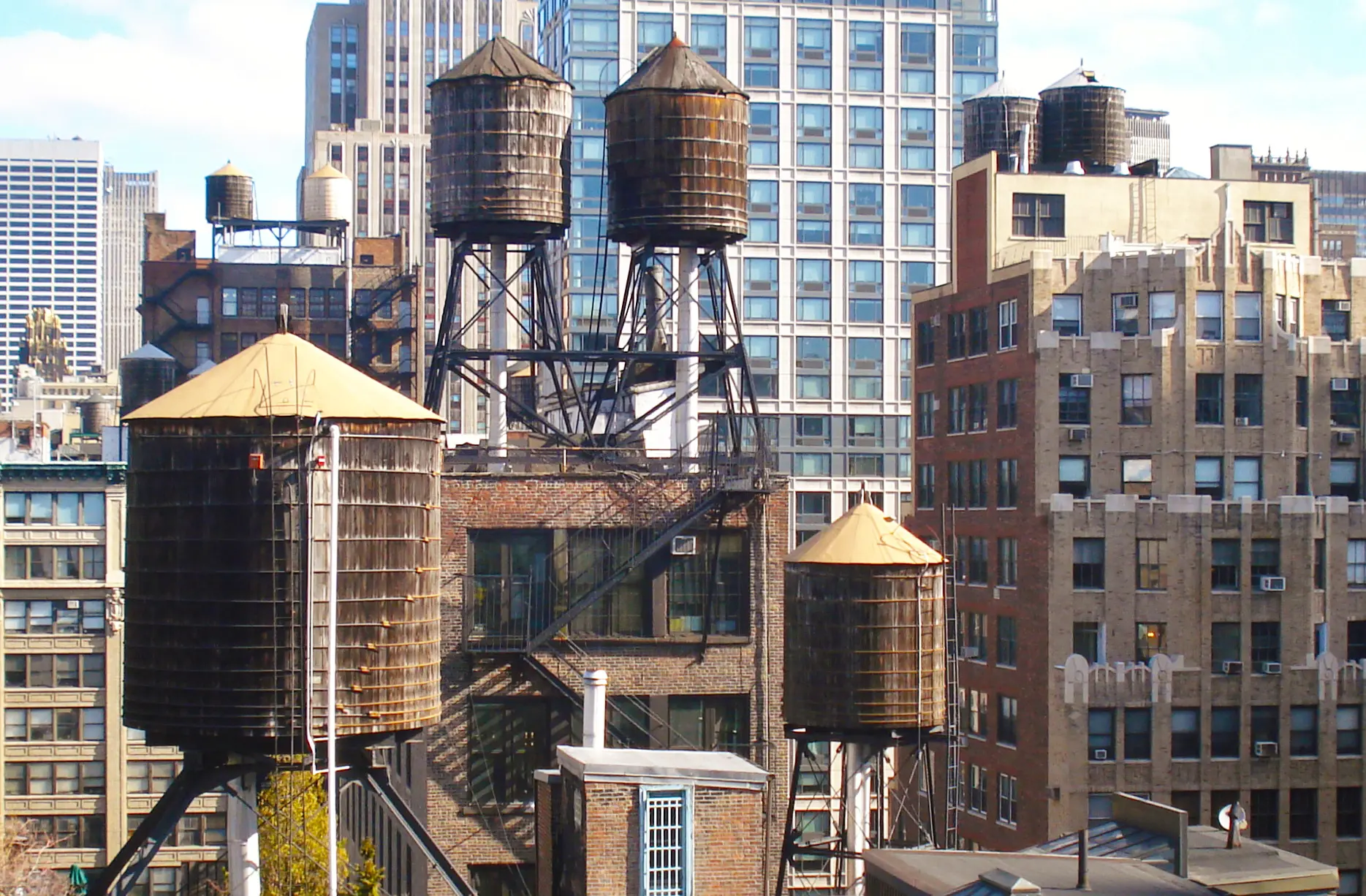
Discarded wood is abundant in New York City. As old structures are rapidly supplanted by new structures, abundant quantities of discarded waste products accumulate. Old patios yield mahogany; decommissioned water towers supply California redwood and Alaskan cedar; furniture offcuts become the source of all types of lovely wood scraps.
Reclaiming this wood involves more than just picking it up and reusing it, so choosing to use old lumber is a commitment. Haining mills each piece he salvages to make it suitable for a new use. The willingness to do this work hinges on recognizing the often-overlooked worth of this used lumber as well as seeing the value of striving for sustainability.
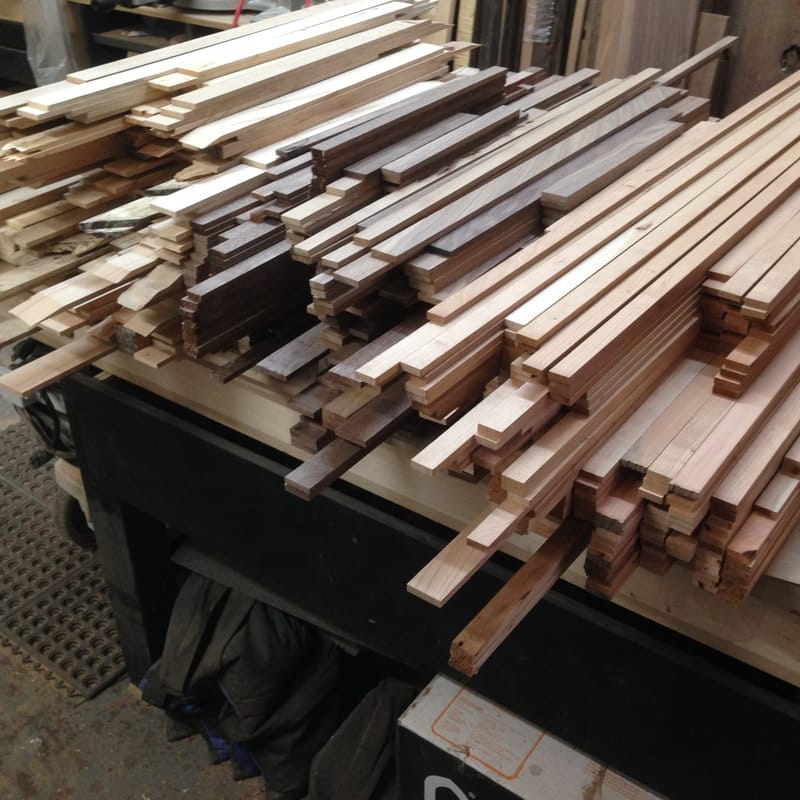
Haining doesn't choose his artistic methods because they are the quickest and easiest route to a finished product. At each stage and step, his work demands time and patience. He begins his projects by choosing a wood species and cutting up a handful of boards into small chunks. He does not use a lathe, and uses hand tools to cut up the pieces.
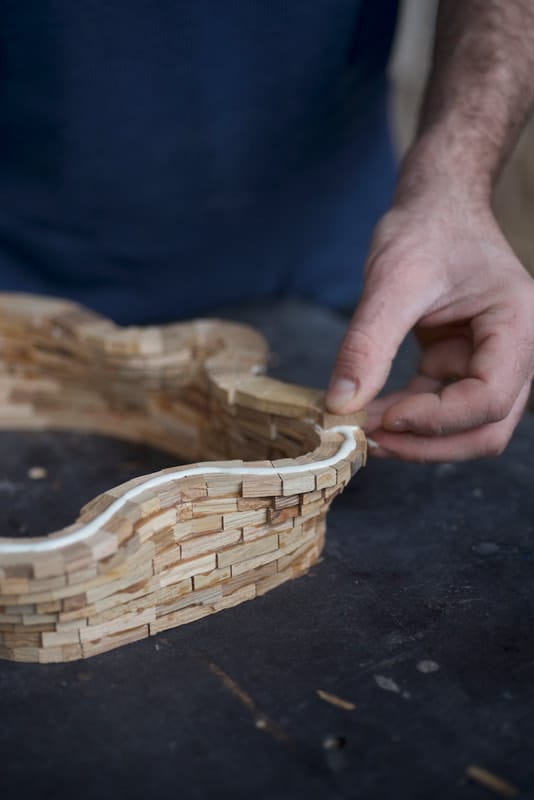
Once his blocks are made, he bonds several veneer discs together to create a base and outlines the perimeter of the project on top of that base using a single layer of blocks. Then he starts stacking, affixing each layer to the last using wood glue, building layer upon layer of the blocks, each one on top of the last. For his small works, he uses about 25 blocks for the bottom layer, and about 1000 pieces for the entire work. Haining has noticed that the work is demanding enough that those who want to try their hand at his art form generally lose interest quickly once they have tried it for a while. It can take two weeks for him to complete a single piece and he often works on more than one project at a time.
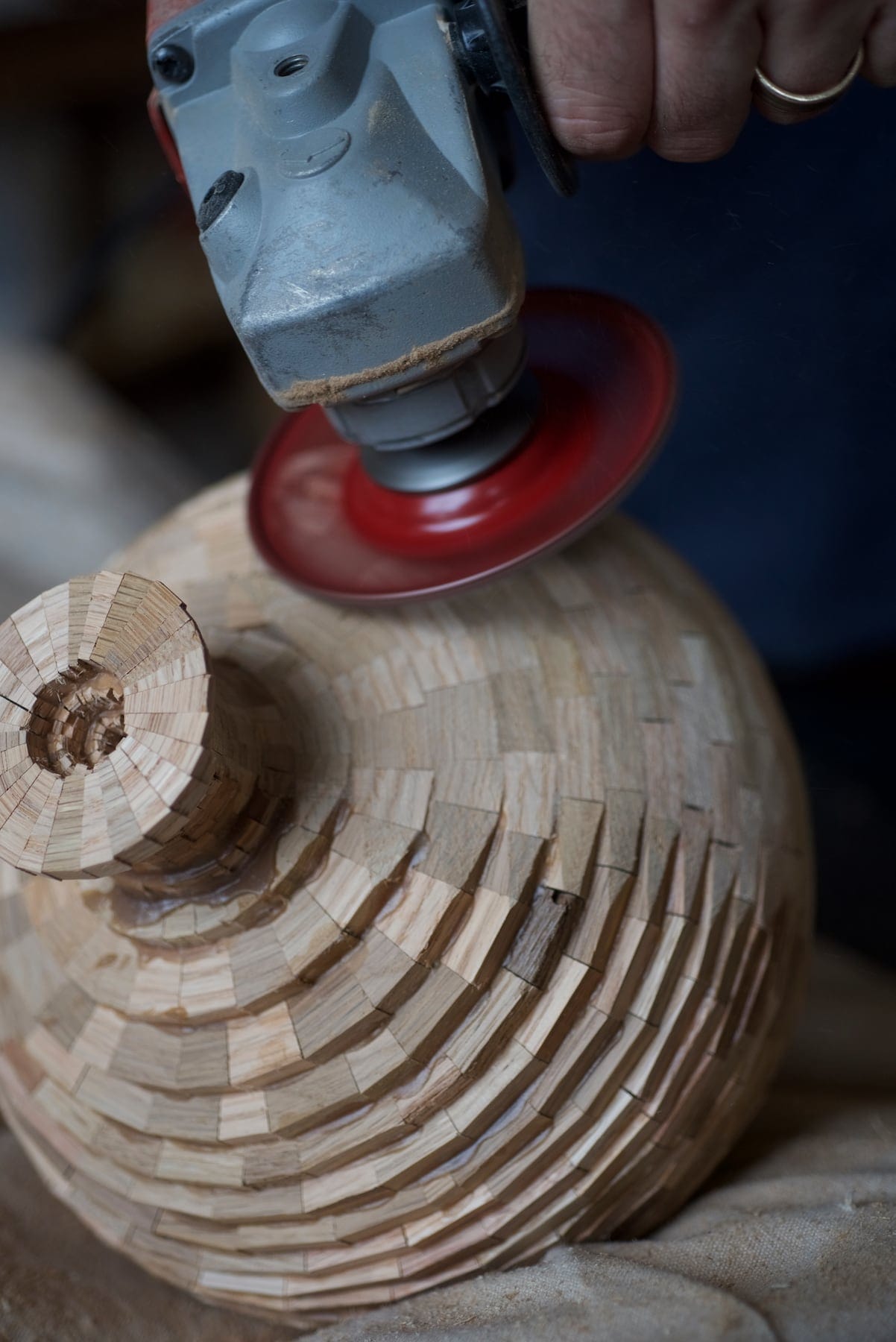
Once he has a piece together, he sculpts its exterior using hand tools, primarily something called an angle grinder. He uses other hand tools such as rasps and sanders to smooth out the surface which, after being sanded, will retain undulations in the surface as a result of the tools he chooses to use. He varnishes the pieces with a custom varnish and completes the finish with a beeswax oil blend of his own devising.
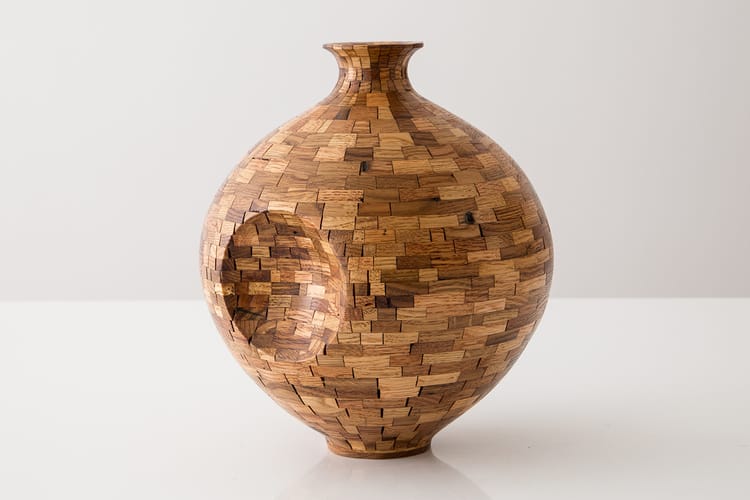
Haining doesn't try to eliminate all the gaps that appear in between the blocks. He believes that those spaces add to the mosaic quality of his work, a quality that is created primarily through the random patterning of colors, grains, and textures of the wood. He creates the work piece by piece and that process of creating something larger from such small individual pieces is an aspect of his work that he finds particularly engrossing.
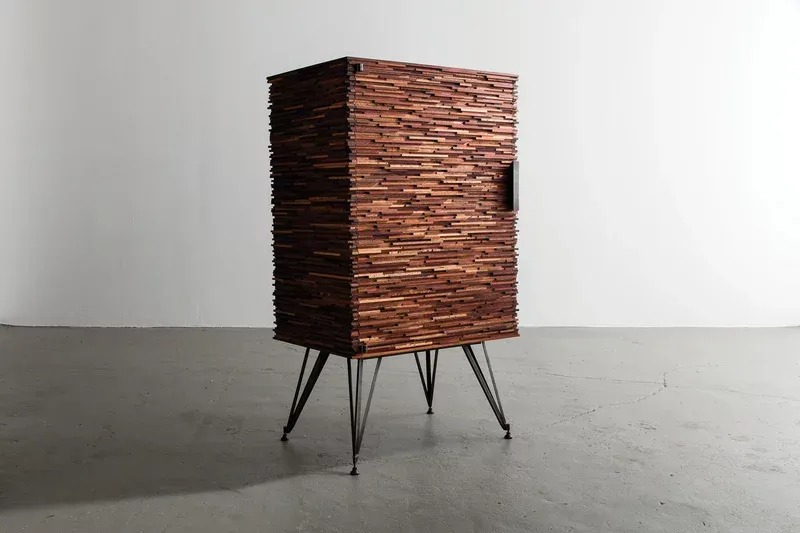
The reclaimed wood he uses is wood that, if purchased new, could be quite expensive and hard to find: Oak, maple, chestnut, ash, redwood, walnut, birch, pine, cedar, mahogany, cherry, and plywood, are all wood species that he incorporates into his work.
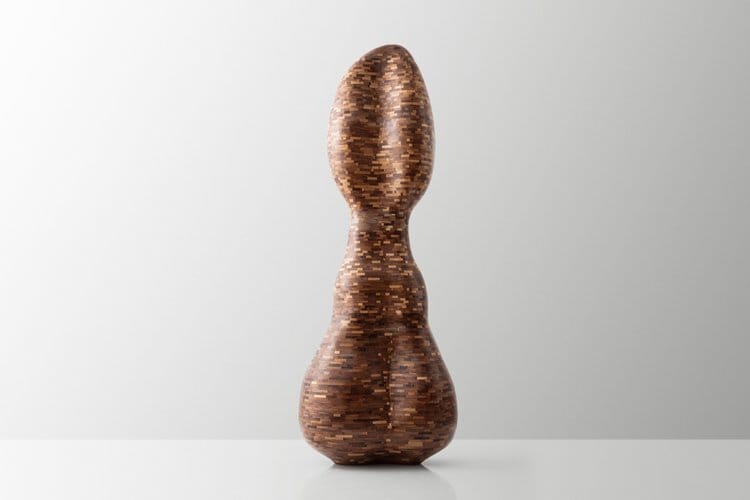
New challenges continue to inspire Haining as they keep him from getting stuck in a rut with his work. New shapes and forms demand new methods and ways of thinking and he continues to discover new possibilities in his art. Adding asymmetrical shapes into his work is one way in which he has stretched himself and his abilities so that he continues to grow as an artist.
Visit the artist's website to learn more about the artist and see more of his art.
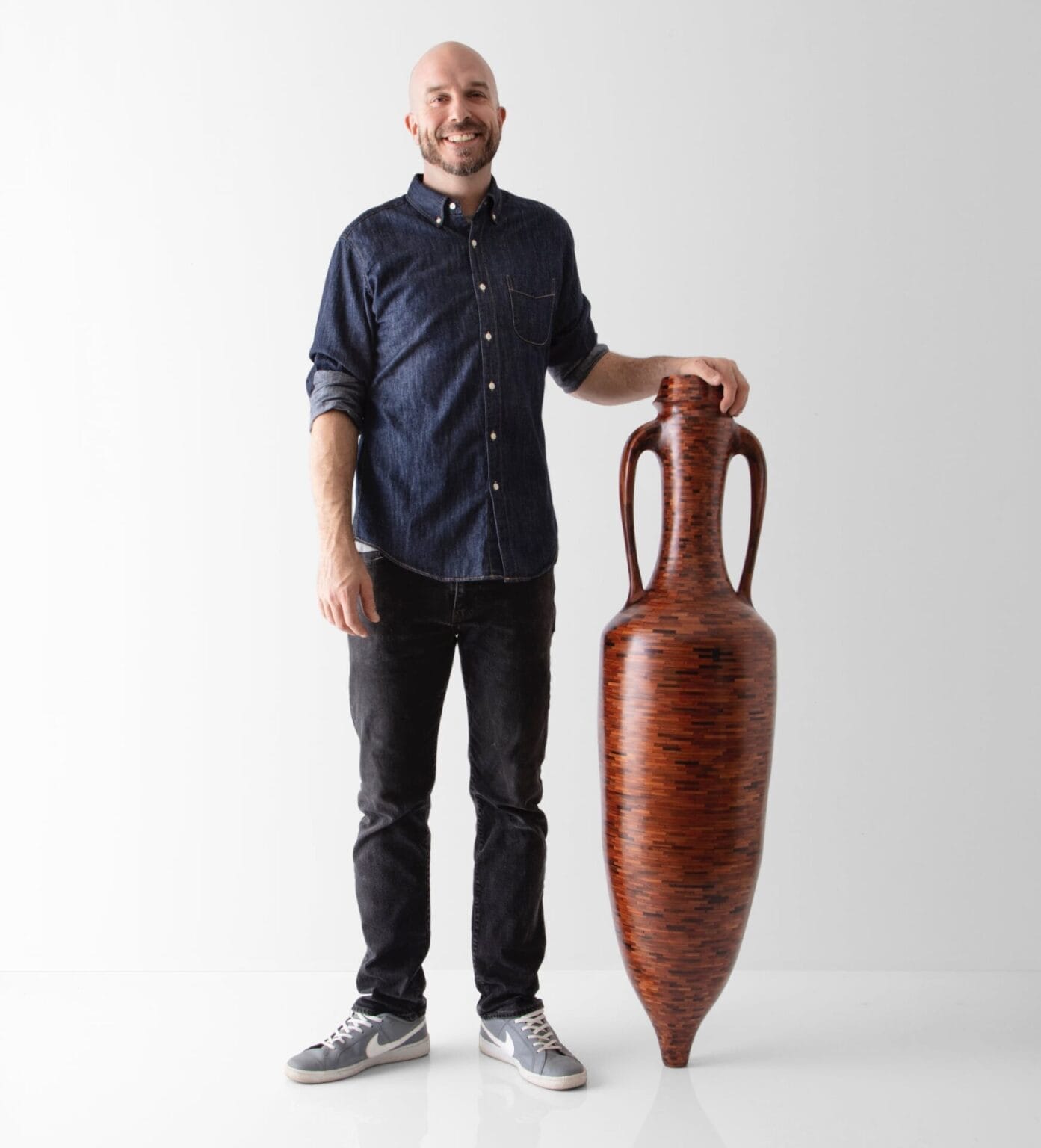
Reflection Questions: Have you found creative ways to reuse materials in a new ways? Are there things that others consider "waste" that you can find great value in? How does your use of resources reflect your values?
Feel free to leave a comment below or contact me directly at louise.conner@circlewood.online.
Louise